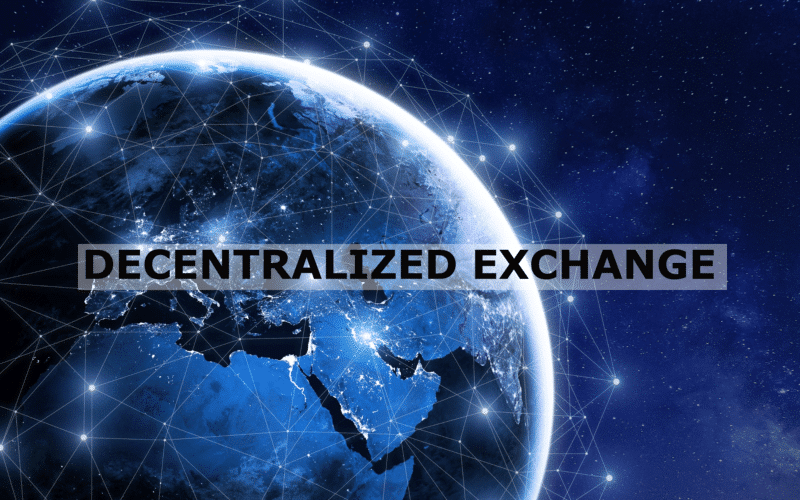Decentralized exchanges are another invention in cryptocurrencies embodying the spirit of not relying on authorities while aspiring for proficiency, anonymity, transparency, and cost-effectiveness.
They share similarities with centralized exchanges like Binance and Kraken, but they are also unique in other aspects. This article will help simplify what might seem like a complicated topic by comparing the two exchange models and highlighting these exchanges’ strengths and weaknesses presently.
What is a decentralized exchange?
To better understand decentralized exchanges, let’s break down the two keywords, ‘exchange’ and ‘decentralized.’ An exchange is merely a marketplace for trading specific financial assets like currencies, stocks, and commodities.
In this scenario, we are referring to cryptocurrencies. One of an exchange’s core functions is providing substantial liquidity for the most keenly speculated coins through order books. They also allow seamless and fair trading for their users while maintaining real-time changes to market prices.
Up until a few years ago, the structure of a typical crypto exchange was understandably centralized. You had a heavily regulated and capitalized entity offering trading services to clients. These companies employed a set signup process often involving identity verification as part of KYC (Know Your Customer) protocols.
Users deposited their money into the exchange to trade the available coins, and the company charged transaction fees. The corporation keeps the private keys to all the crypto holdings of its clients.
While all these mechanisms are highly efficient, control largely remains with the exchange, increasing counterparty and security risks. Ultimately, the whole structure is centralized.
A decentralized exchange (DEX) is like a centralized exchange (CEX), except:
- It heavily relies on blockchain technology
- Custody of funds remains with the trader
- No order book exists
- Encourages more peer-to-peer facilitation
- No KYC is typically required
- Lower risks of hacking exist
- Fees tend to be lower
The different ways decentralized exchanges create liquidity
We’ve just established decentralized exchanges are, for the most part, the opposite of their counterparts. Now one needs to understand how a DEX replaces the functions of a CEX. Perhaps the most complex part to grasp is how this exchange creates liquidity without an order book.
In a centralized exchange, we need intermediaries, namely market makers, behind the scenes to clear transactions and overall ensure trading occurs on-demand. It’s important to note some decentralized exchanges still rely on an order book though most of their infrastructure is non-centralized.
Prominent examples include the Binance DEX, Loopring, ViteX, etc. The two other models used by these exchanges to create liquidity are swaps and aggregators. In the former, different liquidity pools exist for each traded asset contributed by actual users on the platform.
So, effectively, it’s the users creating the market. Many of these platforms have some incentives for people contributing to the pools. Instances of decentralized exchanges using this system include Uniswap, Curve, SushiSwap, Balancer, and many others.
The last model of aggregators aims to solve the problem facing many decentralized exchanges of low liquidity on certain occasions. Rather than fishing for liquidity through one location, an aggregator will source or ‘aggregate’ from other exchanges. Brands practicing this system at the moment include 1inch, DeversiFi, Matcha, etc.
Pros and cons of decentralized exchanges
Let’s look at the brief pros and cons to gain an overview of their strengths and weaknesses.
Pros
- Reduced hacking attacks: Many of the cases in the recent history of substantial amounts of crypto lost from hacking resulted from centralized exchanges. This is because such firms retain the private keys of their clients’ holdings.
With a DEX, the chances for these attacks are lower as no central authority holds this information. Hence, a DEX is theoretically more secure from this standpoint since it doesn’t rely on a single point of failure.
- Generally lower fees: Most decentralized exchanges are usually cheaper than their competitors, and those like Uniswap incentivize their users.
- More privacy-conscious: Nearly all decentralized exchanges don’t follow identity verification checks or KYC. Therefore, users can remain largely anonymous. More pertinently, holders retain their private keys, meaning they maintain full control of their assets (although this is also a disadvantage, as we’ll soon realize).
Cons
- Not particularly user-friendly: The user interface for nearly all centralized exchanges is smoother and easier to use. Another critical point with user-friendliness is the custody of private keys.
Although this is a benefit, users fully take on the demanding responsibility to ensure such information is not lost or forgotten. Once private keys, seed phrases, or other sensitive data to access one’s coins is lost, in most cases, it becomes impossible to recover.
- Lack of trading volume: Another imminent problem with most of these exchanges is liquidity, which is rarely an issue with centralized exchanges. This becomes more of an urgent matter with less-traded tokens, making transactions slower and more expensive due to slippage.
- Lack of regulation: This drawback is more of an issue with cryptocurrencies overall. Many centralized entities obtain registration and operating licenses in strict accordance with the financial industries they serve, a stark contrast to decentralized exchanges.
Things to consider before using a decentralized exchange
The experience of using something like Uniswap is totally different from a brand like Gemini. Of course, the process of using each DEX will vary slightly across the board, but through experience, one can note some commonalities.
- Typically, there is no sign-up process since the vast majority of such exchanges do not require identity verification. Therefore, this is significantly less time-consuming as new users can get to trading almost straight away.
- Users will usually be required to connect a wallet like Metamask, MEW, WalletConnect, Fortmatic, or Portis in advance to enable the transfer and trading of various tokens and just greater participation.
- One of the most important things for these wallets is storing private keys, seed phrases, or other access data for funds in a safe, secure location. As briefly mentioned, should a user lose this information, they will be unlikely to recover any funds from that particular platform.
- Generally, when transferring money from one coin to another, experts recommend users always sending the minimum amount where possible first.
Should the trader use an incorrect receiving address in the initial stage, recuperating the money becomes highly improbable due to the anonymous nature of cryptocurrencies.
Final word
Decentralized exchanges are still an emerging space and must iron out a few things before becoming more mainstream.
Their trajectory up to this point is, nonetheless, positive thus far, providing users with a quicker, more secure, more private, and non-centralized trading experience.








